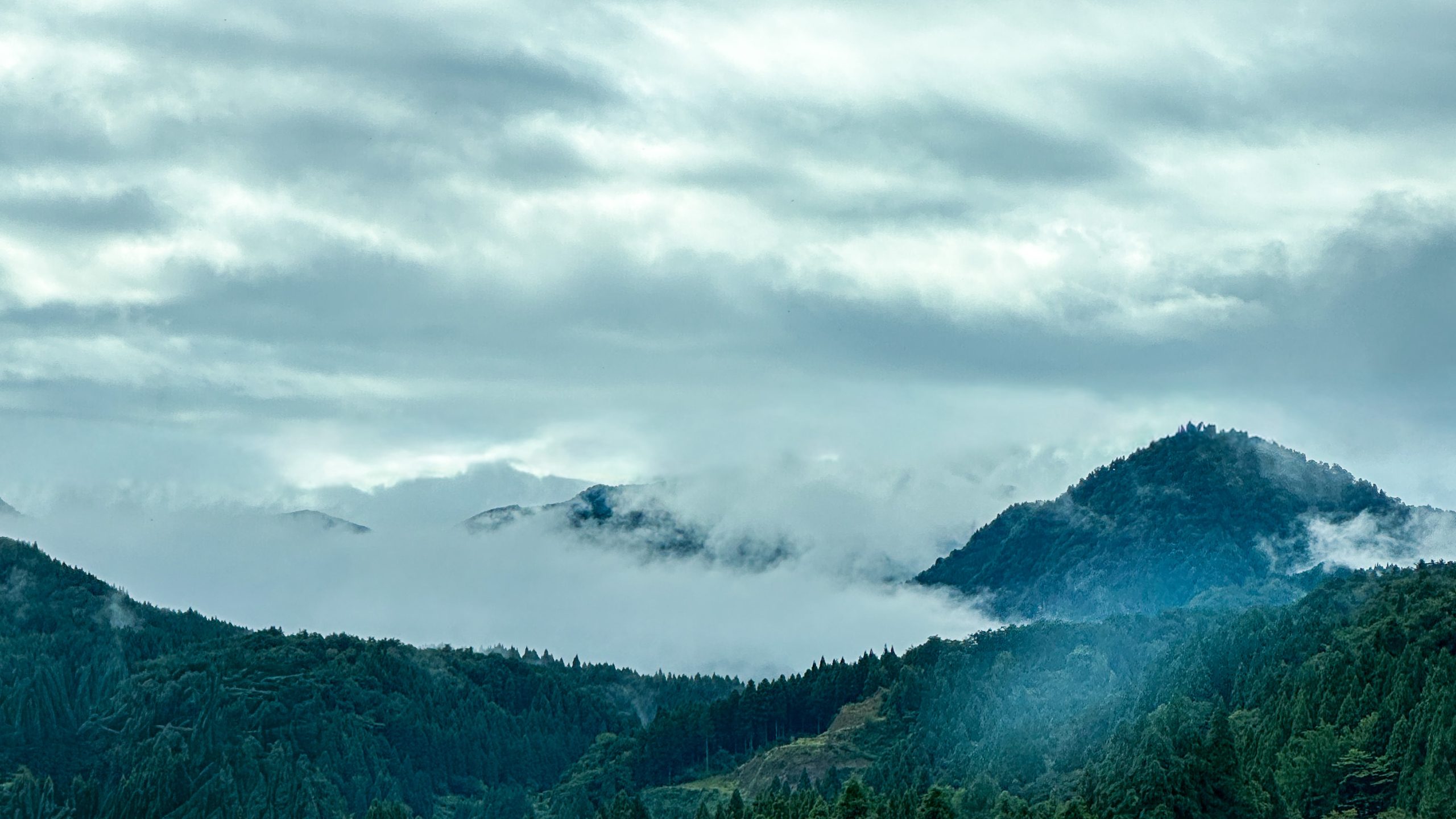
私は埼玉の越谷というところで生まれ育った。
日光街道沿いの宿場町だったこともありその歴史は古いが鉄道の開発もあり、沿線沿いには数多くの団地も建設されベッドタウンという性格が強い。
子供のときからここが都市でも自然が豊かな場所でもない、どっちつかずの空気を子供心に感じていた。際立った個性があるわけでもない。とにかく家が多く建て並んでいた。それも含めてそうした性格の場所だったのだと思う。
小学生に上がるか上がらないかまで神社の祭りがあった。大きな山車を引かれている様子を見た記憶があるがいつのまにかそうした行事もなくなってしまった。
近くには綾瀬川という川が流れていた。近所では1番目に日本で汚れた川という話があった。大人になって調べてみると本当の話だったようだ。
私が通った大学は上野にあったので交通の便には苦労しなかった。大体40分ほどで上野まで乗り換え無しで通うことができた。
20代後半になって私は長野で働く機会を得た。私は初めて今まで住んでいた場所から離れることになった。長野はどこにいても山が見える土地だった。越谷は関東平野の真っただ中だったのでそうした自然の山が身近に見えることなどなかったため、そうした体験は私にとってとても驚きのある体験であった。
美しい自然のすぐ隣に、厳しさもあることを長野で知った。私が長野に引っ越したのは3月ぐらいだったと思う。その寒さに非常に驚いた。
毎年12月になると雪が降った。関東出身の私にとって雪とは一大事であった。関東で積もるほど降ることは少なく、積もった雪景色は特別なもののように感じた。そのためか長野で毎年雪をみることになっても、その時の気持ちが忘れられず嬉しいような気持ちがこみ上げる。雪によって一面真っ白になった街や風景はとても美しく感じた。
自然がすぐそばにあることで、建築に対する自分の態度も自然と変わっていったように思う。建築の在り方として、この環境に根付くものでありたいと思うようになった。使う素材も建築のプロポーションもそこにあるべき姿を求めるようになった。
10年ほど長野に住んだ。それからまた上越へと移住した。
上越は日本海側に面した土地でここもまた長野とも越谷ともまったく違う環境だった。
日本海側は曇りが多く雨も多い、湿度も年間を通して高く、降る雪も多い。また雪の質も長野とは全然違うもので厳しい寒さの長野はさらさらの雪であったが、湿度の高い上越の雪は水気のある重い雪であった。
この環境の違いを通して、環境に根付く建築には形だけではない要素があると感じるようになった。肌から感じる温度や湿度もその建築が心地よいかものかどうかを推し量る指標なのだと。そうした安心できる場所が建築には大切に思われた。
上越は確かに天気が良くない。海も荒々しい。しかし曇りがちな空と波風厳しい鈍色の海は、とても思索的な雰囲気をもっている。太平洋の伸びやかで陽気な明るさとは違う性格を持っている。私はもっぱら海には入らず眺めるだけだが、この海の在り様が好きだ。いつかこの海が見える家に住みたいと思っている。時折見える海に沈む夕日は美しい。
生まれてから三つの都市で感じた自然の感じ方はそれぞれ違った。
ずっと希薄だった自然という存在がどんどんと力強く感じられるものになった。自然の力を肌で実感するならば、昔の人々が伝統的につくってきた建築も理解できる。
自然がすぐそばにあることで、建築は人のための器であるだけでなく、風や光や雪と共に生きる存在だと思うようになった。
I was born and raised in Koshigaya, Saitama.
Once a post town along the old Nikko Highway, the area has a long history. Yet with the development of the railway, numerous housing complexes were built along the line, and the city gradually took on the character of a bedroom town.
Since childhood, I sensed that Koshigaya was neither urban nor blessed with abundant nature—a place suspended somewhere in between. It had no striking individuality. Houses simply stood in dense rows, and perhaps that in itself defined the nature of the town.
Until I was in the early years of elementary school, there was a festival at the local shrine. I remember watching large festival floats being pulled through the streets, but before long, such events disappeared.
Nearby flowed the Ayase River. Locals used to say it was the most polluted river in Japan. When I looked it up as an adult, I found that it was true.
The university I attended was in Ueno, so commuting was easy. It took about forty minutes without a transfer.
In my late twenties, I was given the opportunity to work in Nagano. It was the first time I had lived away from my hometown. Nagano was a land where mountains could be seen from almost anywhere. Having grown up in the flat expanse of the Kanto Plain, it was astonishing to live with mountains so close at hand.
In Nagano, I learned that beauty and severity often stand side by side in nature. I moved there around March, and the cold shocked me. Every December, snow would fall. For someone from the Kanto region, snow was a major event. It rarely accumulated there, and when it did, the sight of a white landscape felt special. Perhaps because of that, even after moving to Nagano, I could never quite lose the childlike joy I felt when the first snow arrived. The town blanketed in white was deeply beautiful.
Having nature so close at all times gradually changed my attitude toward architecture. I began to feel that architecture should be rooted in its environment. The materials I chose, the proportions I sought—all of them began to move toward what felt right for the place itself.
I lived in Nagano for about ten years, and then moved again—to Joetsu.
Facing the Sea of Japan, Joetsu was completely different from both Nagano and Koshigaya. The region had many cloudy and rainy days, high humidity throughout the year, and heavy snowfall. The snow itself was also different: in Nagano, the cold made it dry and powdery, while in Joetsu, the damp air turned it heavy and wet.
Through these contrasts, I came to feel that architecture rooted in its environment involves more than form alone. The temperature and humidity one feels on the skin are also measures of whether a building is truly comfortable. I began to think that such quiet assurance—an atmosphere of physical and emotional comfort—is essential to architecture.
Joetsu’s weather is far from fair, and the sea is often rough. Yet its gray, clouded sky and the heavy waves of its dull-colored sea carry a contemplative atmosphere. It has a different temperament from the Pacific Ocean, which feels open and bright. I never enter the water; I only watch it. But I love the presence of this sea. Someday, I would like to live in a house overlooking it. The sunset sinking into the sea is, at times, breathtakingly beautiful.
Across the three cities where I have lived, the way I have felt nature has been entirely different.
What once seemed faint and distant has grown ever more powerful and immediate. Feeling the force of nature in this way, I can begin to understand why people in the past built the way they did.
Having nature so near has taught me that architecture is not merely a vessel for human life, but a being that lives together with wind, light, and snow.
